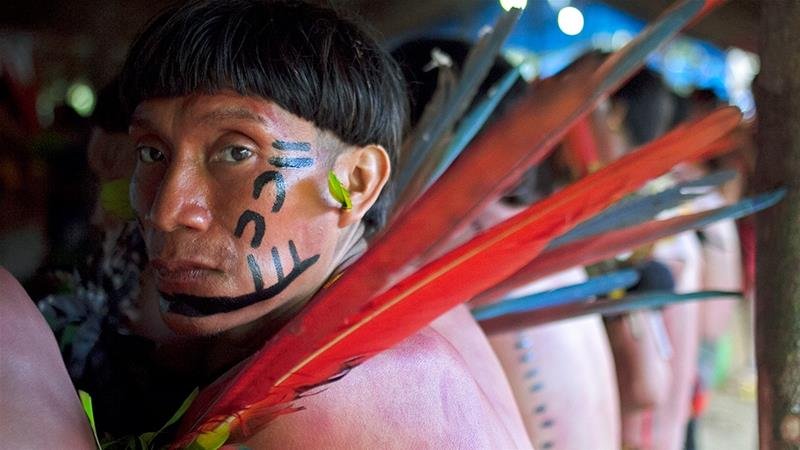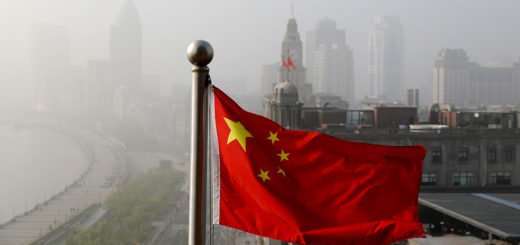The COVID-19 Crisis in Latin America and Indigenous Dilemma

Despite ages of colonial rule, indigenous people make up a huge number in modern-day Latin American states. Set apart from the others, they still follow a traditional way of life, customs and practices which dates back to the pre-colonial times. An interesting aspect of relations between the state and indigenous people in Latin America is that the allocation of resources, developmental activities, education and health and other essential services are severely curtailed for them. Despite the independence of Latin American states, indigenous people have still not received their share of dignity and support and with the rising cases of Covid-19, it reminds them of a pathetic history of colonialism, struggle and misery.
The initial period of colonialism saw vast swathes of the continent being conquered by invading conquistadores, including the spread of diseases which decimated a large number of indigenous people. Indeed, the previously uncontacted communities were vulnerable to diseases such as measles, typhus, smallpox and others against which they did not have any resistance. In a cruel twist of fate, previously flourishing civilizations were laid to waste, but generations after such horrific stories have passed down to the present-day survivors. The Covid-19 may have gripped the entire world in chaos and fear, but it has brought an old fear into their lives.

State of the Indigenous People in Latin America with regards to healthcare.
Before delving into the subject, it is important to elucidate that a vast disparity exists between the indigenous people and other communities in Latin America that extends as far as to healthcare and general well-being. The structure of inequality that resembles a pyramid exhibits a tendency for indigenous people to be more susceptible to diseases. Financing is another issue as much as geographical and linguistic barriers that lead to a communication breakdown. The situation is so grim, that when it comes to mortality, vaccination and treatment for even non-lethal diseases every state exhibits a gross disparity between the indigenous people and other communities. For instance, infant mortality is higher among the indigenous people standing at 48 per one thousand births and 60 percent higher than the others. The absence of any health plan shows a glaring disparity that could complicate any health crisis, large life expectancy gaps amounting to 13 years in Guatemala, 6 years in Mexico and 10 years in Panama, malnutrition and lack of emergency responses demonstrates gross apathy. Discrimination, difficult in visiting a doctor, lack of response from state services and lack of awareness among them regarding health are other reasons for this pathetic state.
Covid-19 and the Indigenous People of Latin America
Undoubtedly, the Covid-19 brings back haunting memories of centuries ago and little has been done to improve the situation of the indigenous people with regards to healthcare. As the pandemic sweeps across Latin America, these people are at the greatest risk and there are possibilities that entire communities may be wiped out at a short notice. The UNHRC has stated that in Brazil which is the epicentre of the virus, tribes such as Warao, Pemon, Kariña, Ye’Kwana and Eñapa are most vulnerable. Additionally, Venezuela that experiences another level of mismanagement and mass migration also has communities in addition to neighbouring Colombia where the Wayuu, Bari, Inga and Sikwani face the same threat. Indigenous people traverse large distances to gather resources for their simple living but due to the pandemic such activities are severely hampered, and devoid of any viable alternatives economic doom may also be dreadful. If not the pandemic, the lockdown will have far severe effect on them.
Developing on past literature, it is estimated that since they have lower resistance to non-endemic diseases, the risk is greater. Poverty, inequality, stigmatization and lack of access to state facilities has already complicated the situation. Lack of trust on the governments, reluctance to settle down in urban areas to avail benefits are additional issues. Though being isolated can be a boon in view of the Covid-19, it may also lead to delay in state responses endangering entire communities without respite.
Such great is the risk of entire communities being infected and subsequently wiped out that many indigenous communities are now exploring possibilities of a self-imposed quarantine apart from the state regulations. Apart from the economic dangers and larger health issues, the context of cultural preservation also needs to be probed. Indigenous people pass down traditional knowledge from elders who are now at the greatest risk after females and children. Indeed, if community elders are the most affected a generation of valuable knowledge and tradition will be lost forever. Communities such as the Mapuche in Chile and Argentina and Pasto in Colombia and Ecuador have introduced strict punishment for lockdown violators in addition to barricading roads and chasing away outsiders. For them, the defence of their land and traditions is of paramount importance. Indigenous leaders in Brazil also related to the complete annihilation of Kalapalo tribe due to measles in 1950 and wish to avoid such incidents in view of the infection of a pregnant woman from the Waorani tribe in Ecuador and the death of a male teen from the Yanomami tribe in Brazil.
Apart from that, the fact that many Latinos are being deported from the United States and quite a large number are from indigenous communities in Central America also exposes them to major risk. Since these communities live in close-knit societies, any infected person could theoretically infect an entire community. It is again not a surprise that Central America apart from Costa Rica has one of the lowest levels of health services even more in the case of indigenous communities in Guatemala, El Salvador and Nicaragua.

What holds in the future for them?
As the indigenous people all across the continent are shutting themselves in and avoiding contact, the economic impact on them is hazardous, with a little alternative source of income apart from regular visits to the markets in main cities to sell their produce and tourism the threat of death due to starvation is quite high. Ill-equipped to deal with this pandemic, not only the Latin American states but also these communities are dumbstruck and clueless about a long-lasting solution. Most agree, that the continent-wide lockdown will only stem the tide of the infection, but will not suffice for long. With people fleeing cities back to their native areas, the threat of a mass spread of infection looms even more.
Ill-prepared government agencies, disillusioned citizens and the lack of basic amenities have brought a grinding halt to the region, where the fear of going hungry or without water has gripped the people more than the virus itself. States such as Chile, Argentina, Brazil and some in Central America saw mob violence where protestors clashed with government authorities demanding food and medicines. In other parts, hungry indigenous people attempted to sell off whatever they had at throwaway prices to last for a few more days. So unprepared were the Latin American states for the Covid-19 that with rising cases and economic issues, they are unable to come to terms with it.

Neglected infrastructure related to health, agriculture and industries won’t be in a position to soak up the damage due to the COVID-19. Added to it are tendencies for rising violence, social crimes such as robbery and sights of desperate peasants and indigenous people trying to survive by any means. Whereas other regions do have better infrastructure and economies to stave off the threats, the same cannot be said for Latin America and more so for the indigenous communities. Even in a post-COVID 19 scenario, the worst affected will be the indigenous people who will have to collectively fight for survival. Fears of contracting the disease as they gradually engage in economic activities in urban areas, rising instances of racist assaults, increasing crime within their societies are some of the issues they need to deal with. It will depend largely on the various national governments and international relief agencies to chalk out a viable plan to protect these vulnerable people. Stress will have to be laid on rehabilitation on economic and health grounds, and the entry of outsiders should be banned in areas reserved for them. Illegal mining and deforestations that are rising to violate all social distancing rules should be checked as such activities may cause fresh cases of infections. This pandemic is a strong reminder of the discrepancies in Latin American societies which needs to be urgently rectified, and the states must attempt to reconcile with the indigenous inhabitants. The challenges against the Latin American states are immense, in view of their weak economies and poor levels of infrastructure, hence one may only speculate as to what may be the end result of such a massive crisis.


















